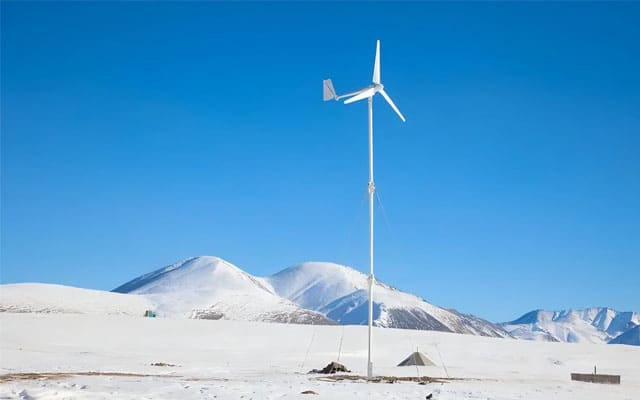⚠ Why Some Small Wind Turbines Fail: Power Overclaims and Poor Low-Wind Performance
Small wind turbines are becoming increasingly popular for farms, ranches, fishponds, and off-grid homes. However, the market is flooded with unreliable models that overpromise and underdeliver. To help you make a smart investment, let’s look at two critical problems users often face—and how to avoid them.
❌ 1. Overrated Output: When 1000W Only Delivers 300W
One of the most common complaints about small wind turbines is the false labeling of output power. Some manufacturers boldly advertise “1000W” or even “2000W” systems—but in real-world conditions, these turbines barely reach 300–400W at peak. The result? Frustrated customers, poor system performance, and wasted investment.
What You Should Do:
-
Always request real test data: Reliable manufacturers provide power curves that show how much electricity their turbines actually generate under different wind speeds.
-
Look for third-party certifications: Standards like CE or IEC ensure safety and quality, and reflect realistic performance claims.
-
Avoid suspiciously low prices: If a product seems too good to be true, it probably is.
💡 Tip: Real performance beats exaggerated specs. Ask for transparent data before you buy.
2. Poor Efficiency in Low-Wind Areas
Most small wind turbines on the market are optimized for wind speeds of 5m/s or higher. But many residential or agricultural areas experience average wind speeds well below this. This mismatch leads to:
-
Slow or no blade rotation
-
Insufficient energy output
-
System shutdowns during calm periods
This is especially problematic for off-grid users who rely on wind energy as a consistent backup source.
How to Fix It:
-
Choose turbines with low start-up wind speed: Look for systems that start generating power at 2.5m/s or lower.
-
Upgrade to advanced blade materials: Models with flexible, high-toughness fiberglass blades are more responsive in light wind conditions and start spinning faster.
-
Pair with solar power: A hybrid system combining wind and solar ensures more stable performance, especially in cloudy or low-wind seasons.
💡 Best practice: For rural areas like farms or fishponds, a hybrid system ensures reliable power even when the sun isn’t shining or wind is low.
🛠A Smarter Approach to Wind Energy
As demand for decentralized energy grows, users are becoming more aware—and more cautious—about the quality of small wind systems. At ELEGE NEW ENERGY, we believe in providing honest performance data, using durable materials, and supporting hybrid systems for real-world results.
We offer:
-
Tested power curves
-
Flexible fiberglass blade options
-
Low-start wind speed turbines
-
Wind–solar hybrid systems for farms, ranches, and remote sites
Ready to get a wind turbine that truly works for you?
Explore our solutions here: https://energy-elege.com

